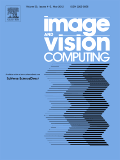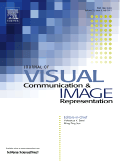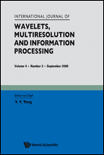
IMAGE AND VISION COMPUTING
Scope & Guideline
Transforming insights into breakthroughs in visual computing.
Introduction
Aims and Scopes
- Computer Vision Algorithms:
The journal publishes papers on various algorithms that improve image analysis, object detection, and scene understanding, including deep learning techniques and traditional computer vision methods. - Image Processing Techniques:
Research focused on image enhancement, restoration, segmentation, and feature extraction is a core area, with applications spanning medical imaging, remote sensing, and multimedia. - Interdisciplinary Applications:
The journal encourages submissions that apply vision and imaging techniques to diverse fields such as robotics, healthcare, autonomous vehicles, and augmented reality. - Human-Computer Interaction (HCI):
Papers exploring the interaction between humans and machines through visual interfaces, including gesture recognition, emotion detection, and user experience studies. - Emerging Technologies:
Research on cutting-edge technologies such as 3D imaging, virtual reality, and machine learning applications in vision computing is highlighted.
Trending and Emerging
- Deep Learning Techniques:
There is a significant rise in the application of deep learning techniques for various tasks such as image segmentation, classification, and object detection, showcasing the effectiveness of neural networks in handling complex visual data. - Multimodal Learning:
Research exploring the integration of multiple data modalities (e.g., visual, textual, auditory) is gaining traction, reflecting the need for more holistic approaches to understanding and interpreting visual information. - Real-time Processing and Edge Computing:
Emerging studies focus on real-time image processing and the utilization of edge computing for applications in autonomous systems and smart devices, emphasizing the need for efficient and rapid analysis. - Explainable AI in Vision Tasks:
There is an increasing emphasis on explainable AI techniques that aim to make the decision-making processes of computer vision systems more transparent and understandable, which is crucial in sensitive fields like healthcare. - Robustness Against Adversarial Attacks:
Research addressing the robustness of vision systems against adversarial attacks is trending, highlighting the importance of security in image analysis and machine learning applications.
Declining or Waning
- Traditional Image Processing Techniques:
There is a noticeable decline in publications focusing solely on traditional image processing methods without integration into machine learning frameworks, as the field moves towards more sophisticated, data-driven approaches. - Basic Object Detection:
Research papers centered around basic object detection techniques without the incorporation of deep learning or advanced methodologies have decreased, indicating a shift towards more complex and effective solutions. - Hardware-Specific Implementations:
Studies that emphasize hardware-specific implementations for image processing are less frequent, as the community increasingly prioritizes software-based innovations that are more widely applicable. - Theoretical Foundations:
Theoretical papers that do not include practical applications or experimental results are becoming less common, as researchers seek to demonstrate real-world applicability of their findings. - 2D Image Analysis:
There is a waning interest in 2D image analysis as research increasingly focuses on 3D imaging, depth perception, and multi-dimensional data analysis.
Similar Journals

MACHINE VISION AND APPLICATIONS
Advancing the Frontiers of Machine Vision Innovation.MACHINE VISION AND APPLICATIONS is a distinguished peer-reviewed journal published by SPRINGER, serving as a vital platform for innovative research in the fields of computer vision, pattern recognition, and their applications within hardware and software systems. Since its inception in 1988, the journal has been at the forefront of disseminating cutting-edge findings and advances in machine vision technologies, significantly contributing to the global academic discourse. With an impressive track record, the journal ranks in the Q2 category across various domains in the 2023 Scopus rankings, reflecting its esteemed position in Computer Science Applications, Computer Vision and Pattern Recognition, Hardware and Architecture, and Software. Although it does not currently offer open access options, MACHINE VISION AND APPLICATIONS remains a critical resource for researchers, professionals, and students eager to explore emerging trends and methodologies in the rapidly evolving landscape of machine vision.

International Journal on Document Analysis and Recognition
Elevating Standards in Document Recognition ResearchInternational Journal on Document Analysis and Recognition (IJDAR), published by Springer Heidelberg, stands at the forefront of research and advancements in the field of document analysis, computer vision, and pattern recognition. With its ISSN 1433-2833 and E-ISSN 1433-2825, the journal is an essential resource for researchers and practitioners focusing on innovations in automatic document processing, image analysis, and artificial intelligence applications in document retrieval and recognition. Recognized as a Q1 journal in multiple relevant categories, including Computer Science Applications, Computer Vision and Pattern Recognition, and Software, IJDAR boasts impressive Scopus rankings that position it among the top-tier publications in these domains. The journal’s converged publication years from 1998 to 2024 offer a rich repository of knowledge essential for both theoretical and practical advancements, ensuring that researchers, professionals, and students can keep pace with the latest findings and methodologies. Access options may vary, but the journal continuously strives to facilitate the dissemination of high-quality research that contributes significantly to the academic discourse in document analysis and recognition.

JOURNAL OF FLOW VISUALIZATION AND IMAGE PROCESSING
Pioneering Research in Flow Visualization and Computational TechniquesThe Journal of Flow Visualization and Image Processing, published by Begell House Inc, serves as a pivotal forum for scholars and practitioners in the fields of computer science applications, condensed matter physics, and mechanical engineering. Since its inception in 1996, this journal has been dedicated to advancing the understanding of fluid dynamics through visualization techniques and image processing methodologies. With a publication trajectory extending to 2024, the journal has established a solid reputation, reflected in its Q3 categorization across multiple disciplines as of 2023, indicating its relevance and contribution to current research paradigms. Although it is not an open-access journal, it offers invaluable insights and findings that are critical for researchers, professionals, and students alike who are interested in the complexities of flow phenomena and their applications. The journal's commitment to disseminating high-quality research—despite its current rankings, which show room for improvement—underscores its potential for growth and the vital role it plays in fostering innovation within the scientific community.

MULTIMEDIA SYSTEMS
Bridging Theory and Practice in Multimedia SystemsMULTIMEDIA SYSTEMS, published by SPRINGER, is a premier academic journal dedicated to the dynamic field of multimedia technology and its applications across various domains. With the ISSN 0942-4962 and E-ISSN 1432-1882, this journal has established itself as an essential resource since its inception in 1993, providing researchers and professionals with rigorous peer-reviewed articles that explore innovative developments in Media Technology, Computer Networks, Hardware Architecture, Information Systems, and Software. As a testament to its academic impact, MULTIMEDIA SYSTEMS has attained a Q2 ranking in multiple key categories for 2023, alongside a notable Q1 ranking in Media Technology, highlighting its significance within the community. With a rich repository of knowledge and ongoing commitment to advancing multimedia research, this journal is an invaluable asset for those seeking to stay informed about cutting-edge technologies and methodologies. While the journal follows a traditional subscription model and is not presently open access, it ensures high-quality content that serves the scholarly needs of its audience, facilitated by its accessibility from Germany's respected academic infrastructures. For inquiries and submissions, the journal is based in New York, NY, further illustrating its global academic reach.

CAAI Transactions on Intelligence Technology
Elevating Standards in AI and Computer ScienceCAAI Transactions on Intelligence Technology is a premier peer-reviewed journal published by WILEY, dedicated to advancing the fields of Artificial Intelligence, Computer Networks and Communications, Computer Vision and Pattern Recognition, Human-Computer Interaction, and Information Systems. Since its inception in 2017, this Open Access journal has rapidly ascended the ranks, achieving Q1 quartile status across multiple categories as of 2023, and is recognized for its rigorous standards and innovative research dissemination, evidenced by impressive Scopus rankings, including Rank #12 in Computer Vision and Pattern Recognition. Through its commitment to providing a platform for high-quality research, the journal invites contributions from scholars globally, fostering a collaborative environment that stimulates intellectual exchange and encourages advancements in intelligent technology. Addressed to researchers, professionals, and students alike, CAAI Transactions on Intelligence Technology serves as a vital resource for those aiming to stay at the forefront of technological innovation.

VISUAL COMPUTER
Connecting Research, Design, and VisionVISUAL COMPUTER is a prestigious journal published by Springer, focusing on the dynamic fields of computer graphics, computer-aided design, computer vision, and software. Established in 1985, this interdisciplinary journal serves as a vital platform for sharing innovative research, applications, and developments crucial to the advancement of visual computing technologies. With a notable Q2 ranking in various categories, including Computer Graphics and Computer-Aided Design, and Computer Vision and Pattern Recognition, VISUAL COMPUTER demonstrates a solid impact within the academic community, marked by its Scopus rankings that reflect its significant contributions to the field. While the journal does not offer open access, it remains a reliable source of high-quality content for researchers, professionals, and students eager to stay abreast of emerging trends and techniques, ultimately fostering collaboration and knowledge exchange within the rapidly evolving landscape of visual computing.

JOURNAL OF VISUAL COMMUNICATION AND IMAGE REPRESENTATION
Illuminating the Future of Image ProcessingJOURNAL OF VISUAL COMMUNICATION AND IMAGE REPRESENTATION, published by Academic Press Inc Elsevier Science, is an influential platform dedicated to the realms of visual communication, media technology, and advanced image representation. With a strong focus on interdisciplinary approaches, this journal aims to foster the exchange of innovative ideas among researchers and professionals in the fields of computer vision, image processing, and signal processing. Recognized for its significance, it boasts an impressive impact factor within its category quartiles; notably, it ranks Q2 in Computer Vision and Pattern Recognition and Electrical and Electronic Engineering, while achieving Q1 in Media Technology. Based in the United States, the journal not only provides valuable insights into the latest developments from 1990 to 2024 but also encourages cutting-edge research that enhances multimedia systems and user interactions. As a vital resource for students, researchers, and industry professionals alike, the journal ensures a robust understanding of visual information processing, critical for navigating today's digital landscape.

International Journal of Wavelets Multiresolution and Information Processing
Advancing Multiresolution Techniques for Tomorrow's ChallengesWelcome to the International Journal of Wavelets, Multiresolution and Information Processing, a leading platform published by World Scientific Publishing Co. Pte Ltd that explores the intricate intersections of applied mathematics, signal processing, and information systems. Since its inception in 2006, this journal has provided a robust avenue for scholars and practitioners to disseminate innovative research and developments in wavelet theory and its multidisciplinary applications, providing valuable insights into complex problem-solving across various fields. With an impact factor that reflects its rigorous peer-review process and commitment to quality, the journal holds a commendable Q3 category ranking in Applied Mathematics, Information Systems, and Signal Processing as of 2023. The journal is housed in Singapore and serves a global audience, ensuring that groundbreaking research is accessible to all. Emphasizing open discourse and collaboration, the International Journal of Wavelets, Multiresolution and Information Processing is an essential resource for researchers, professionals, and students aiming to advance their understanding and practical use of wavelet and multiresolution techniques.

JOURNAL OF MATHEMATICAL IMAGING AND VISION
Elevating Research Standards in Mathematical ImagingJOURNAL OF MATHEMATICAL IMAGING AND VISION, published by Springer, stands as a significant platform for advancing the fields of applied mathematics, computer vision, and pattern recognition, among others. With an ISSN of 0924-9907 and an E-ISSN of 1573-7683, this esteemed journal is based in the Netherlands and has been contributing to the scholarly discourse since its inception in 1992, with a converged focus through 2024. It has achieved reputable standings within several quartiles, including Q2 rankings across applied mathematics, geometry and topology, and condensed matter physics, reflecting its impact and relevance. Notably, the journal ranks within the top 5% in Geometry and Topology and maintains robust standings in Statistics and Probability. The JOURNAL OF MATHEMATICAL IMAGING AND VISION is dedicated to publishing high-quality research that bridges theoretical perspectives with practical applications, making it an essential resource for researchers, professionals, and students who are exploring the cutting-edge of mathematical imaging and its interdisciplinary applications.

Computational Visual Media
Connecting global minds in computational visual media.Computational Visual Media, published by TSINGHUA UNIVERSITY PRESS, is a premier open access journal dedicated to advancing the fields of Artificial Intelligence, Computer Graphics and Computer-Aided Design, and Computer Vision and Pattern Recognition. Since its inception in 2015, it has established a robust position within the academic community, consistently achieving Q1 rankings across its categories as of 2023. With exceptional Scopus rankings, including a remarkable percentile standing in the top 10% globally, the journal serves as a vital resource for researchers, professionals, and students eager to explore cutting-edge methodologies and technologies in computational visual media. The journal’s open access format enhances accessibility, fostering global collaboration and dissemination of knowledge, making it an indispensable platform for those at the forefront of innovation in these dynamic fields. The journal is headquartered in Beijing, China, and aims to publish high-quality research that not only contributes to theoretical advancements but also addresses practical challenges within computational visual technologies.